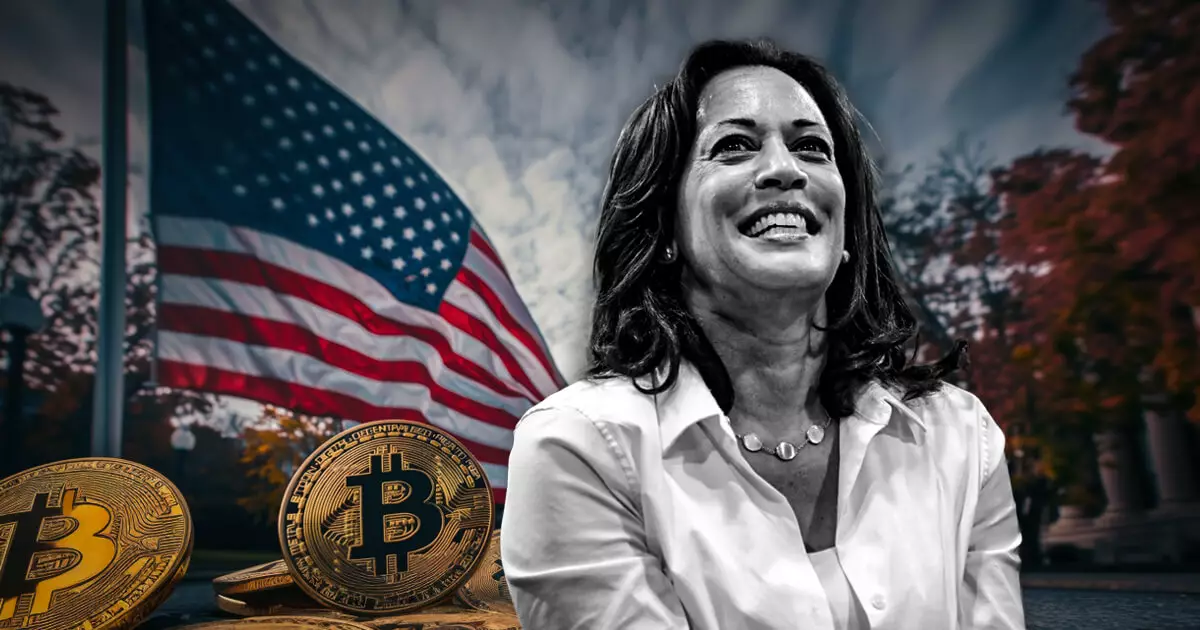The upcoming presidential election in the United States is set to have pivotal implications for the cryptocurrency landscape. According to a recent analysis by Alex Thorn, head of research at Galaxy Digital, the positions of the candidates—Primarily Vice President Kamala Harris and former President Donald Trump—signal varying levels of optimism and concern for the crypto industry. This analysis delves into their proposed policies regarding key issues such as taxation, Bitcoin mining, banking regulations, and self-custody that are crucial for shaping the future of the digital asset ecosystem in America.
Tax policy is a critical element that can shape the viability of the crypto industry. Thorn’s scorecard presents Harris as “extremely hostile” regarding taxation in the crypto realm, citing her commitment to reverse tax cuts enacted under Trump. This perspective raises concerns within the crypto community that a Harris presidency could limit innovation by imposing regulations that are perceived as punitive or restrictive towards investors and businesses engaged with digital currencies.
Conversely, Trump has cultivated a reputation for pushing towards clearer and potentially more favorable tax structures for the crypto space. His campaign has promised regulatory clarity related to digital asset taxation, which could alleviate some of the uncertainties that currently plague investors. The contrasting approaches to tax policy illustrate a fundamental difference in philosophy: where Harris’ stance may deter investment through increased burdens, Trump’s vision appears more inviting, likely to stimulate growth and engagement.
The policies surrounding Bitcoin mining reveal a stark contrast between the two candidates. The Biden administration’s proposal of a hefty 30% tax on Bitcoin mining has raised eyebrows, while Harris’ statements have offered a somewhat gentler approach. While her campaign rhetoric acknowledges the importance of cryptocurrency, her actual stance is still perceived as somewhat ambiguous and less favorable compared to Trump.
Trump’s approach, however, might be seen as radically supportive. By actively engaging with Bitcoin miners and framing mining as a component of domestic manufacturing, his administration is likely to foster an environment conducive to the expansion of Bitcoin mining operations across the country. Should Trump regain office, the implications could unleash significant growth within this segment of the crypto market, enhancing the competitiveness of American miners globally.
Banking regulations stand as a substantial barrier to entry for many potential players in the crypto sector. The narrative among insiders suggests that Harris may soften some of the harsher restrictions set by the Biden administration, particularly regarding access to banking institutions for crypto-related activities. This potential shift could make a difference for many startups and projects craving traditional banking services.
On the flip side, Trump has openly pledged to dismantle policies like “Operation Chokepoint 2.0,” which limit banking access for cryptocurrency-based businesses. By advocating for national banks’ engagement with blockchain technologies, Trump seeks to draw more substantial partnerships between the financial sector and innovative startups. In this arena, the Trump campaign appears to resonate more positively, offering a broader horizon for financial interplay within crypto.
While both candidates seem to adopt a more neutral stance on the issue of self-custody, interpretations of their intentions vary. Harris has not explicitly outlined her views on self-custody, but some of her advisors have expressed skepticism toward the practice, raising concerns among proponents of individual asset ownership. In contrast, Trump has voiced support for protecting self-custody rights—an essential component for the crypto community aimed at fostering autonomy and security for users.
Despite these varying degrees of support, experts are cautious about predicting drastic changes in this arena, given the muted focus on self-custody in broader regulatory conversations. For digital asset holders, the emphasis may continue to be on the established protocols rather than any sweeping regulatory reversals.
The Broader Landscape: Bitcoin vs. Altcoins
Interesting dynamics arise when examining broader implications for Bitcoin and altcoins in light of these candidates’ policies. While Bitcoin may continue to flourish regardless of the electoral outcome, the potential for regulatory frameworks under Trump could drive the performance of altcoins. Projects like Uniswap’s UNI could gain traction if Trump’s administration provides the desired clarity and support.
In concluding this analysis, it appears that while both Harris and Trump exhibit divergent positions that will undoubtedly impact the US crypto landscape, the outlook is endowed with various opportunities and challenges. With Trump’s proposed reforms having the potential for explosive growth, the scenario under Harris could also deliver a softer landing than seen under Biden, representing a nuanced scenario for digital assets overall. As elections approach, those invested in the crypto space would do well to closely monitor these developments, as they may redefine the industry’s future trajectory for years to come.


Leave a Reply